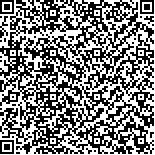下载中心
优秀审稿专家
优秀论文
相关链接
摘要

近20年来,中国风云气象卫星完成了从试验应用型向业务服务型、从第一代到第二代、从单一探测到综合探测、从定性到定量的转变,实现了业务化、系列化、定量化的发展目标,风云卫星数据预处理、产品生成、数据应用技术取得全面进步。在地理定位方面,通过发展自主的地理定位算法,持续优化算法精度,业务定位精度提高到1个像素。在辐射定标方面,发展了基于月球订正的星上内黑体定标算法、深对流云定标、月亮定标和交叉定标等算法,建立了综合定标系统,太阳反射波段平均定标偏差小于5%,红外通道平均定标偏差小于0.5 K。建立了风云气象卫星产品生产及质量控制体系,具备数十种大气、陆地、海洋、空间天气定量遥感产品生产能力,部分产品质量达到或接近国际同类产品先进水平。风云气象卫星资料在天气、气候、生态、环境等领域得到广泛应用,特别是通过ECMWF(欧洲中期天气预报中心)的严格测试评估,在国际顶级数值预报模式中得到同化应用,标志着风云气象卫星部分仪器数据质量达到或接近国际先进水平。虽然中国风云气象卫星观测体系基本形成、观测精度不断提高、业务服务能力日趋增强,但仍存在仪器稳定性差、探测能力有限、探测精度有待进一步提高等问题。风云气象卫星未来发展需着重考虑以下几个方面:(1)建立合理的多星综合观测体系,重点是优化高中、低气象卫星轨道配置方案,建立多星联合组网观测体系,增强全球监测能力,提高时空分辨率;(2)提高探测精度,包括发展高精度星上定标系统,提高观测仪器的精度和稳定性,发展先进的卫星数据处理和产品反演算法等;(3)增强探测能力,重点是加强新型探测方法、探测技术研究,逐步实现对气象全要素的遥感探测,(4)增强应急响应能力,提高短时强对流等灾害天气监测能力;(5)提高卫星观测的连续性和稳定性,满足气候变化研究的需求;(6)增强多源数据综合应用能力,提高气象卫星的应用效益。
Over the past 20 years, the Chinese Fengyun meteorological satellite has progressed from the experimental phase to the operational phase, from the first generation to the second generation, from providing single observation to providing comprehensive observations, and from qualitative application to quantitative application. The Fengyun meteorological satellite has also realized the objects of operation, serialization, and quantification. Great progress has been made in data preprocessing, product generation, and data application. In the field of geolocation, the development and continuous optimization of independent geolocation algorithms have improved the geolocation accuracy of operational satellite data from 2-3 pixels to 1 pixel. In the field of radiometric calibration, the inner blackbody calibration algorithm corrected by lunar emission, the deep convective cloud calibration algorithm, the lunar calibration algorithm, and the cross calibration algorithm have been developed. On the basis of such algorithms, a comprehensive calibration system has been established to improve the calibration accuracy of solar reflective bands to 5% and thermal infrared bands to 0.5K. In the field of product generation, the Fengyun Product Generation System(PGS)and its corresponding quality control system have been established. The PGS system can output dozens of quantitative products of the atmosphere, land, ocean, and space weather. The quality of several products reaches or approaches those at the international level. Fengyun satellite data have been widely used in weather monitoring, climate analysis, ecology and environmental surveys, etc. After strict quality control and evaluation, Fengyun satellite data have been operationally assimilated into ECMWF's operational NWP model, thus indicating that the application of Fengyun satellites has reached a new level. The meteorological satellite observation system established in China shows continuous improvement in terms of observation accuracy and service capability. However, the system cannot fully satisfy the requirements of different applications. In the future, the following aspects should be considered for the development of Fengyun satellites. First, a reasonable observation system should be established. Second, data and product quality should be improved. Third, sounding ability should be strengthened. Forth, future meteorological satellites should enhance emergency response capability. Fifth, the continuity and stability of observation should be enhanced to satisfy the requirements of climate change research. Finally, the comprehensive application capability should be enhanced to make meteorological satellites more useful.

